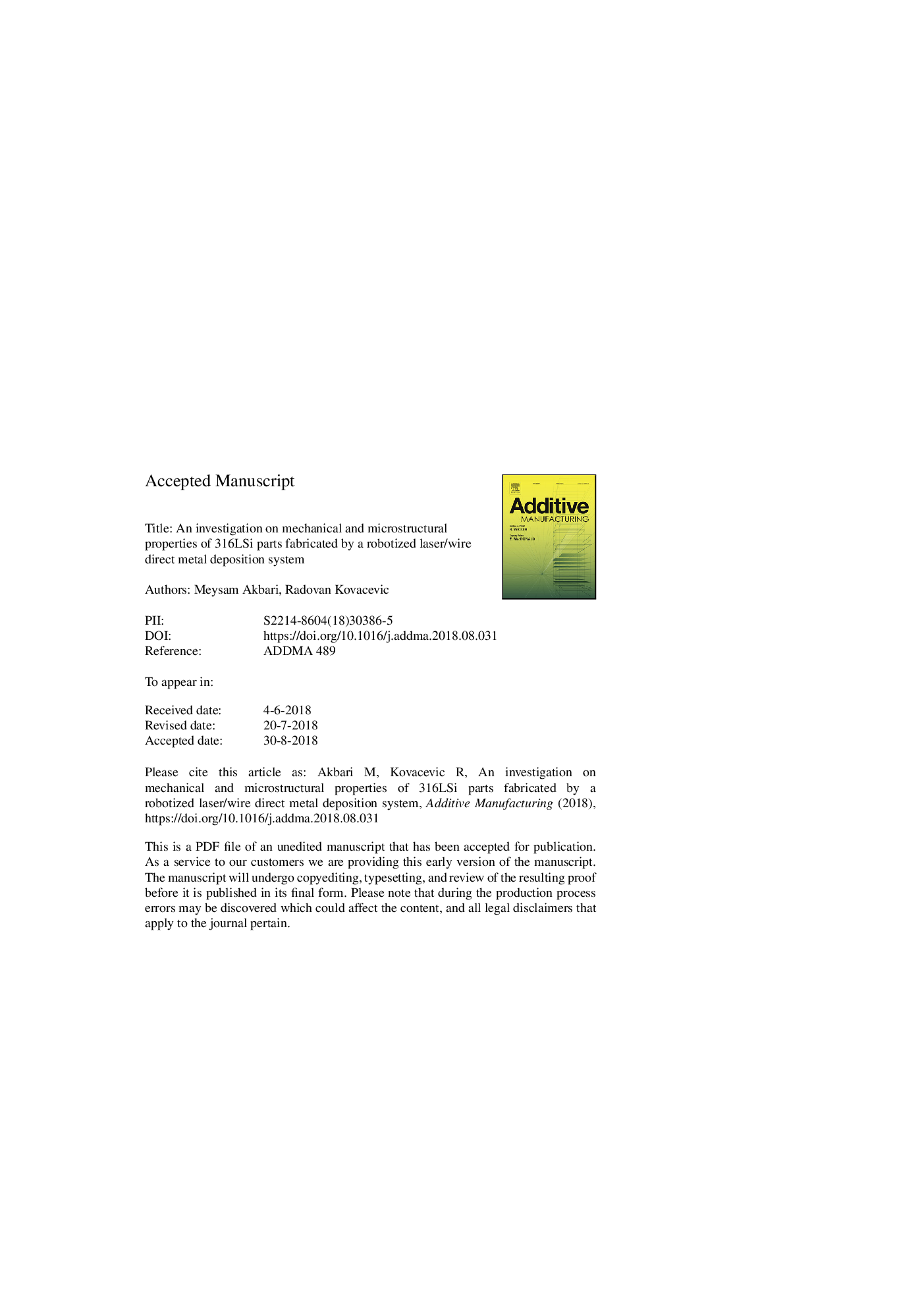| Article ID | Journal | Published Year | Pages | File Type |
|---|---|---|---|---|
| 11004153 | Additive Manufacturing | 2018 | 34 Pages |
Abstract
A robotized laser/wire direct metal deposition system was utilized to fabricate 316LSi coupons. The mechanical and microstructural properties were then characterized. Two types of coupons, thin-walled and block, of short and long inter-layer time intervals were considered. It was found that different thermal histories caused by different inter-layer time intervals have significant impact on mechanical and microstructural properties. The thin-walled samples with lower cooling rates showed coarser columnar grains, lower ultimate tensile strength, and lower hardness compared to the block samples. The melt pool was monitored in real-time. An empirical correlation between the melt pool area and cooling rate was achieved that could enable control of scale of the final solidification structure by maintaining the melt pool size in real-time. Further, to study the anisotropic behavior, tensile samples were loaded in parallel and perpendicular directions with respect to the deposition direction. The results indicated that samples in the perpendicular direction had lower UTS and elongation for both coupon types, revealing a weaker bonding at inter-layer/bead interface due to the existence of lack-of-fusion pores.
Related Topics
Physical Sciences and Engineering
Engineering
Industrial and Manufacturing Engineering
Authors
Meysam Akbari, Radovan Kovacevic,
